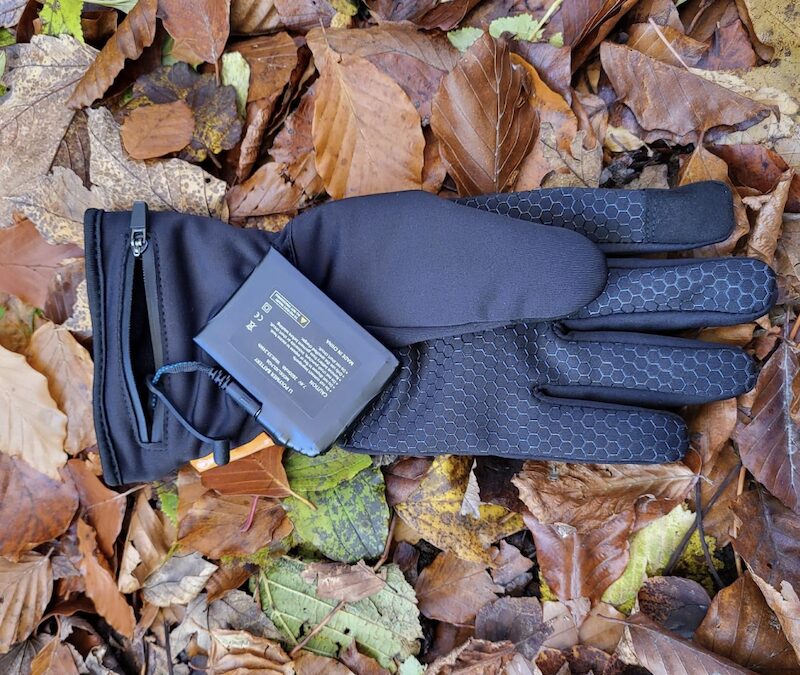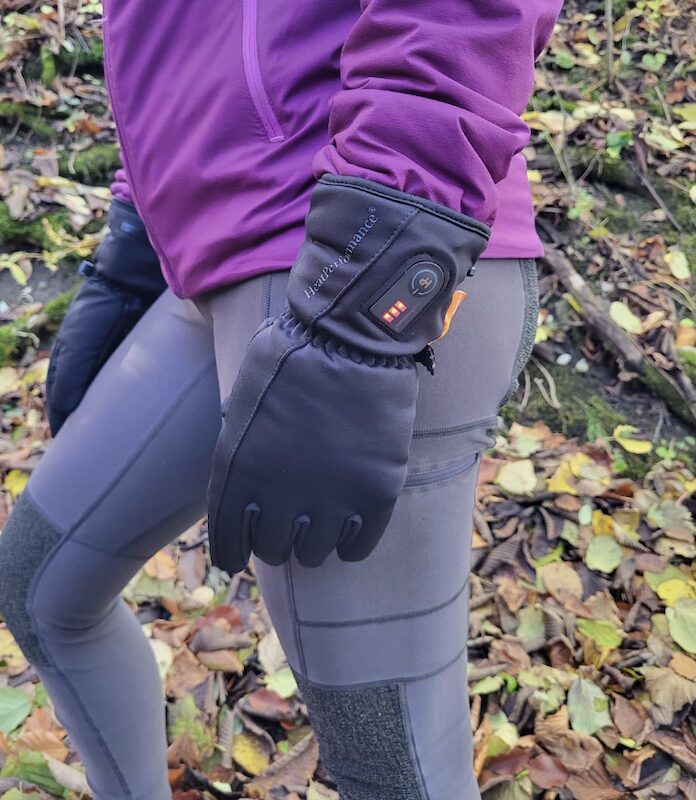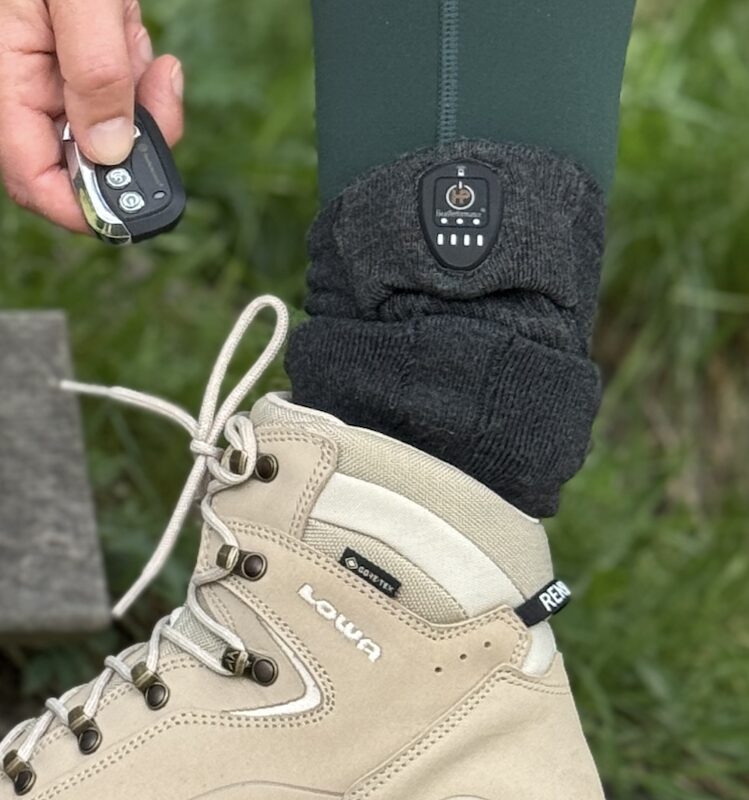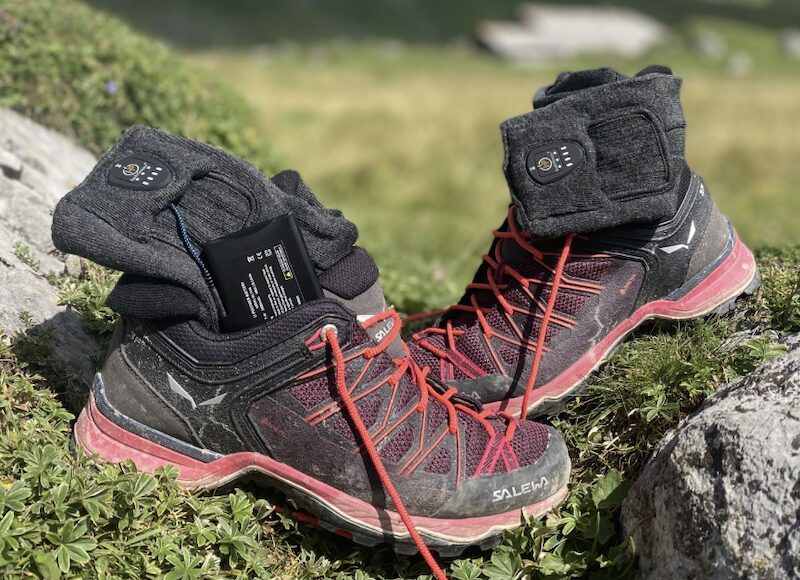If you’ve ever found yourself halfway up a Scottish hill, marvelling at the view but unable to feel your fingers, you’re not alone. Cold hands are one of the most common frustrations for hikers, especially in winter or in Scotland’s unpredictable weather.
But there are a number of ways that you can protect your hands and keep them warm while walking.

1. Keep moving – your best built-in heater
It sounds obvious, but movement really is the key. Your body keeps warm through circulation, and your hands are the first to lose warmth when you stop.
If you’re taking a break, keep your fingers flexing or gently clench and unclench your fists. Swing your arms, stretch your shoulders, or even jog on the spot for a few seconds. Small movements to keep the blood flowing can make a big difference.
2. Avoid tight cuffs, straps and watches
Anything that squeezes your wrists can restrict blood flow to your fingers. For example, a watch strap that is too tight can cause circulation to be lost in that hand. The same goes for tight jacket cuffs, snug wristbands, or rucksack straps that press on your forearms. A small adjustment can bring an instant boost in warmth, especially if you’re prone to cold hands when hiking.

3. Choose gloves that suit the weather – not just the look
Gloves are not one-size-fits-all when it comes to hiking. On milder days, thin liner style gloves might be all you need for warmer hands but, when it’s colder, mittens or split-finger gloves work best because they let fingers share the warmth.
Windproofing and waterproofing will be a bonus, too. Try adding a waterproof over-mitt for waterproofing and better insulation.
If, like me, you suffer from cold fingers or Raynaud’s, heated gloves for women can be a game-changer. Modern rechargeable gloves (like those from HeatPerformance®) offer gentle, even warmth without bulk. They’re ideal for long winter hikes when temperatures drop below zero, or for the final stretch back to the car when fatigue sets in.

4. Layer your hands – yes, that’s a thing
Just as we layer clothing on our body, we can layer our hands. A thin, moisture-wicking liner (synthetic or merino) under a wind-resistant outer glove traps warmth effectively.
On very wet days, use a lightweight waterproof shell glove over normal gloves. It doesn’t feel glamorous, but it stops the wind and keeps the damp out, which are two of the biggest enemies of warm hands.
5. Keep your core warm
This might sound unrelated, but it’s vital. When your body cools down, it instinctively reduces blood flow to your extremities to protect your vital organs. That’s why your hands (and feet) are often the first to freeze.
Make sure your torso is well insulated – thermal base layer, mid-layer fleece and a windproof jacket – and your hands will naturally stay warmer, too.
6. Manage moisture – inside and out
Sweaty gloves might not sound like a problem, but trapped moisture quickly turns to chill. Choose breathable materials, and if your hands tend to sweat, carry a second pair of liners to swap mid-hike. Having spare gloves that you can change halfway through the day can be a bonus.
7. Embrace smart technology
Gone are the days when the only option was wool or leather. Today’s outdoor technology offers lightweight, rechargeable, and weather-resistant solutions. Heated gloves, heated socks, battery-powered liners and hand-warmers can make long days in cold weather more enjoyable.
Think of them as an extension of your layering system, not a luxury. Staying warm keeps you moving longer, safer and happier.
Final thoughts – comfort is not a weakness
There can be a strange pride among hikers about “toughing it out”, but comfort is what lets you stay outside longer and enjoy the adventure. Cold hands can distract you from the beauty of a snowy ridge or a pink winter sunrise.
With the right layers, small adjustments, and a bit of planning, you can hike through Scotland’s coldest months with warm fingers and a smile.
Because the outdoors isn’t just for summer – it’s for anyone willing to stay warm enough to enjoy it.


